Home> Company News> Optimizing Your Hydraulic System with the Right Hydraulic Pump Set
Hydraulic systems are an essential part of modern machinery and equipment, used to power everything from construction equipment to industrial machinery. Hydraulic pumps play a critical role in these systems, regulating the flow and pressure of hydraulic fluid to ensure optimal performance. However, not all hydraulic pumps are created equal, and choosing the right hydraulic pump set is key to achieving maximum efficiency and reliability.
In this outline, we will discuss the importance of optimizing your hydraulic system with the right hydraulic pump set, providing a detailed explanation of hydraulic pump sets and their components. We will also cover the factors to consider when selecting the right pump set for your specific needs, as well as the benefits of using the right pump set in your hydraulic system. Finally, we will provide recommendations for installation, maintenance, and troubleshooting of hydraulic pump sets, as well as upgrading your system for improved performance and efficiency.
Understanding Hydraulic Pump Sets
Hydraulic pump sets are used in a wide range of industrial and mobile machinery to power hydraulic systems. The basic principle of a hydraulic pump set is to convert mechanical energy into hydraulic energy, which can then be used to power a variety of hydraulic machinery.
A hydraulic pump set typically consists of one or more hydraulic pumps, a reservoir, and a motor or engine. The pumps are responsible for generating the hydraulic energy, while the reservoir provides a storage space for the hydraulic fluid. The motor or engine provides the mechanical energy required to power the pumps.
There are several different types of hydraulic pumps that may be included in a hydraulic pump set, including gear pumps, vane pumps, and piston pumps. Each type of pump has its own unique advantages and disadvantages, and the type of pump used in a particular hydraulic system will depend on factors such as the required fluid pressure and flow, the size and capacity of the system, and the type of machinery being powered.
The hydraulic pump set works by taking in hydraulic fluid from the reservoir and using the hydraulic pumps to pressurize the fluid. The pressurized fluid is then sent through the hydraulic lines to power various hydraulic machinery, such as hydraulic motors or cylinders.
Proper selection and use of a hydraulic pump set can have significant benefits for the efficiency and effectiveness of a hydraulic system. The right pump set can ensure that the system is able to generate the necessary fluid pressure and flow to power the machinery, while also reducing energy consumption and minimizing downtime due to equipment failure.
Choosing the Right Hydraulic Pump Set
When selecting the right hydraulic pump set for your hydraulic system, it's essential to consider several factors that affect the pump's performance and efficiency. These factors include the type of machinery, the required fluid pressure and flow, and the size and capacity of the system.
Different types of machinery require different types of hydraulic pump sets. For example, excavators and bulldozers may require high-pressure pumps, while hydraulic presses may require pumps with high flow rates. Understanding the machinery's specific needs can help you choose the right hydraulic pump set to achieve optimal performance and efficiency.
In addition to the type of machinery, the required fluid pressure and flow also play a significant role in selecting the right pump set. The pump set must be capable of delivering the required pressure and flow to meet the machinery's demands. It's important to consider the maximum pressure and flow requirements, as well as the average requirements, to ensure that the pump set can handle the load.
Finally, the size and capacity of the hydraulic system must be considered when selecting the right hydraulic pump set. The pump set must be able to handle the volume of hydraulic fluid required by the system while maintaining the required pressure and flow. It's important to choose a pump set that is appropriately sized for the system to avoid overworking the pump, which can lead to reduced efficiency and increased wear and tear.
Overall, choosing the right hydraulic pump set requires a thorough understanding of the machinery's specific needs, as well as the hydraulic system's size and capacity. By taking these factors into consideration, you can select a pump set that will optimize your hydraulic system's performance and efficiency.
Benefits of the Right Hydraulic Pump Set
Using the right hydraulic pump set in your hydraulic system can provide a number of benefits, including improved efficiency, reduced energy consumption, and increased reliability.
One of the main benefits of using the right pump set is improved equipment output. With the correct pump set, the hydraulic system will be able to deliver the required fluid pressure and flow to the equipment, allowing it to operate at peak performance. This can result in increased productivity and reduced downtime due to equipment failure or breakdowns.
Another benefit of using the right pump set is reduced energy consumption. Hydraulic systems can be energy-intensive, and using the wrong pump set can lead to inefficient operation and increased energy costs. By using the right pump set, the hydraulic system can operate more efficiently, reducing energy consumption and saving money on operating costs.
Using the right pump set can also improve the reliability of your hydraulic system. The correct pump set will be able to maintain the required fluid pressure and flow consistently, reducing the risk of equipment damage or failure due to fluctuating pressure or flow. This can result in increased equipment lifespan and reduced maintenance costs over time.
In addition to these benefits, using the right pump set can also result in quieter operation, as well as improved safety and environmental performance. Overall, investing in the right hydraulic pump set for your system can provide a range of benefits that can help to improve the performance and efficiency of your equipment, while also reducing costs and minimizing the risk of equipment damage or failure.
Installation and Maintenance
Proper installation and maintenance of your hydraulic pump set are critical to ensuring that it continues to function efficiently and reliably over time. Here are some key steps to keep in mind:
-
Choose the right location: The location of your hydraulic pump set is important, as it should be easily accessible for routine maintenance and inspection. It should also be situated in a dry and clean area to prevent contamination of the hydraulic fluid.
-
Connect components correctly: During installation, ensure that all components are correctly connected, and that fittings and hoses are properly tightened to prevent leaks. Use the recommended torque values for all connections, and verify that all seals and gaskets are in good condition.
-
Fill with the right fluid: Use the recommended hydraulic fluid for your system and ensure that it is clean and free of contaminants. Fill the system to the correct level, and remove any air pockets by cycling the pump a few times before operating.
-
Implement a maintenance schedule: Establish a regular maintenance schedule to keep your hydraulic pump set in good condition. This should include routine inspections, cleaning, and replacement of any worn or damaged parts. Consult your manufacturer's recommendations for the appropriate maintenance intervals for your specific pump set.
-
Inspect regularly: Regular inspections are essential for detecting any issues before they cause significant damage. Inspect the pump set regularly for signs of leaks, wear, or damage to components. Check fluid levels and temperature regularly and look for any unusual noises or vibrations during operation.
By following these installation and maintenance guidelines, you can help ensure that your hydraulic pump set continues to function optimally and reliably over time, helping to improve the overall efficiency and longevity of your hydraulic system.
Common Issues and Troubleshooting
Despite proper installation and maintenance of your hydraulic pump set, issues can still occur. Knowing how to troubleshoot and identify problems can help prevent further damage to your pump set and machinery. Here are some common issues that can arise and some tips for resolving them.
-
Leaks: Leaks can occur due to damaged seals, loose fittings, or cracks in the pump housing. To identify the source of the leak, inspect the pump set for signs of oil around the fittings and seals. Tighten any loose fittings and replace any damaged seals or pump parts as necessary.
-
Noise: Unusual noise can indicate air in the hydraulic system, worn out bearings or gears, or cavitation. To identify the source of the noise, inspect the pump set and hydraulic lines for any signs of air bubbles. Check the bearings and gears for any signs of wear, and inspect the inlet line for any blockages or restrictions.
-
Overheating: Overheating can occur due to a lack of fluid, incorrect fluid viscosity, or a malfunctioning pump. To identify the source of the problem, check the fluid level and viscosity, and inspect the pump for any signs of malfunctioning parts or damage.
-
Incorrect Pressure or Flow: If your equipment is not performing as expected, it may be due to incorrect pressure or flow in the hydraulic system. To identify the issue, use a pressure gauge or flow meter to measure the pressure or flow at different points in the system. Adjust the pressure or flow as necessary to meet the requirements of your equipment.
-
Cavitation: Cavitation occurs when air bubbles form in the hydraulic fluid due to a lack of fluid, incorrect fluid viscosity, or damaged pump parts. To identify the source of the problem, inspect the fluid level and viscosity, and check the pump for any signs of damage or wear. Replace any damaged pump parts as necessary, and ensure the fluid level is adequate.
-
Excessive Wear: Excessive wear can occur due to a lack of lubrication or contamination of the hydraulic fluid. To prevent excessive wear, ensure the hydraulic fluid is clean and free of contaminants, and use the recommended lubricant for your pump set.
By being aware of these common issues and how to resolve them, you can prevent damage to your hydraulic pump set and equipment, and ensure optimal performance and efficiency. Regular maintenance and inspections can also help prevent these issues from occurring in the first place.
Upgrading Your Hydraulic Pump Set
One of the most effective ways to optimize your hydraulic system is by upgrading your hydraulic pump set with new pumps or control systems. Upgrading your hydraulic pump set can offer a range of benefits, including improved performance and efficiency, increased reliability, and reduced energy consumption. In this section, we will discuss the benefits of upgrading your hydraulic pump set and provide recommendations for assessing the feasibility of upgrading your system and selecting the right pump set for your needs.
Benefits of Upgrading Your Hydraulic Pump Set
There are several reasons why you might want to upgrade your hydraulic pump set. One of the most common reasons is to improve the performance and efficiency of your hydraulic system. Newer pump sets are often designed with the latest technology and features that can help optimize fluid pressure and flow, resulting in better equipment output and reduced energy consumption. Additionally, newer pump sets may be more reliable and have longer lifespans, reducing the need for costly repairs or replacements.
Another benefit of upgrading your hydraulic pump set is the opportunity to reduce your environmental impact. Newer pump sets are often designed with energy-saving features that can help reduce your carbon footprint and overall energy consumption. This can be especially important if you are operating in an industry that requires strict adherence to environmental regulations.
Finally, upgrading your hydraulic pump set can offer significant cost savings in the long run. By improving the efficiency of your hydraulic system, you may be able to reduce your energy consumption and operating costs. Additionally, newer pump sets may require less maintenance and fewer repairs, reducing your overall maintenance costs.
Assessing the Feasibility of Upgrading Your System
Before upgrading your hydraulic pump set, it's important to assess the feasibility of the upgrade. This can involve evaluating your current hydraulic system and identifying any limitations or areas for improvement. You may also want to consider factors such as budget, time constraints, and the availability of qualified technicians to perform the installation and maintenance.
When assessing the feasibility of upgrading your hydraulic pump set, it's also important to consider the potential benefits of the upgrade. This can involve evaluating the impact that the upgrade could have on your equipment output, energy consumption, and overall operating costs. By taking the time to carefully assess the feasibility of the upgrade, you can ensure that you are making the right decision for your business.
Selecting the Right Pump Set for Your Needs
Once you have decided to upgrade your hydraulic pump set, it's important to select the right pump set for your specific needs. This can involve evaluating factors such as the type of machinery you are using, the required fluid pressure and flow, and the size and capacity of your hydraulic system. Additionally, you may want to consider factors such as the cost of the pump set, the availability of replacement parts, and the reputation of the manufacturer.
When selecting a hydraulic pump set, it's important to work with a qualified technician or engineer who can help you evaluate your specific needs and identify the right pump set for your application. By taking the time to carefully select the right pump set, you can ensure that you are maximizing the efficiency and performance of your hydraulic system.
Conclusion
Optimizing your hydraulic system with the right hydraulic pump set is crucial for ensuring efficient and reliable performance. A hydraulic pump set is a combination of different hydraulic pumps that work together to regulate fluid pressure and flow in a hydraulic system. In this outline, we will discuss the benefits of using the right hydraulic pump set, how to choose the right pump set for your hydraulic system, and the importance of proper installation and maintenance.
Hydraulic systems play a vital role in many types of machinery, from construction equipment to industrial machinery. These systems use hydraulic pumps to convert mechanical power into hydraulic energy, which is then used to power various components in the machinery. A hydraulic pump set is made up of different types of hydraulic pumps, such as gear pumps, vane pumps, and piston pumps, which work together to regulate fluid pressure and flow in the hydraulic system.
Using the right hydraulic pump set in your hydraulic system can provide numerous benefits, including improved efficiency and reduced energy consumption. The right pump set can also improve equipment output and increase reliability, leading to improved performance and reduced downtime. With so many different types of hydraulic pump sets available, choosing the right one for your specific needs can be challenging.
When selecting the right hydraulic pump set for your hydraulic system, there are several factors to consider. The type of machinery, the required fluid pressure and flow, and the size and capacity of the system are all essential factors to consider when choosing the right pump set. It is also essential to select a pump set that is compatible with the hydraulic fluid used in your system and to ensure that the pump set's components are made of high-quality materials.
Proper installation and maintenance are crucial for ensuring that your hydraulic pump set continues to function correctly. When installing a hydraulic pump set, it is essential to choose the right location for the set and ensure that all components are correctly connected. It is also important to follow the manufacturer's recommended maintenance schedule and perform regular inspections to detect any potential issues early on.
Common issues that can arise with hydraulic pump sets include leaks and improper pressure settings. It is essential to troubleshoot these issues promptly to prevent damage to the pump set or equipment. Regular maintenance and inspections can help detect and resolve these issues before they cause significant problems.
Upgrading your hydraulic pump set with new pumps or control systems can provide numerous benefits, including improved performance and efficiency. When considering an upgrade, it is essential to assess the feasibility of upgrading your system and selecting the right pump set for your needs. Upgrading your hydraulic system can be a significant investment, but the long-term benefits to your machinery's success make it a worthwhile investment.
In conclusion, optimizing your hydraulic system with the right hydraulic pump set is crucial for efficient and reliable performance. By selecting the right pump set for your needs, performing proper installation and maintenance, and troubleshooting issues promptly, you can ensure that your hydraulic system operates at peak performance. Investing in hydraulic system upgrades can provide long-term benefits to the success of your machinery, making it a wise investment for any business.
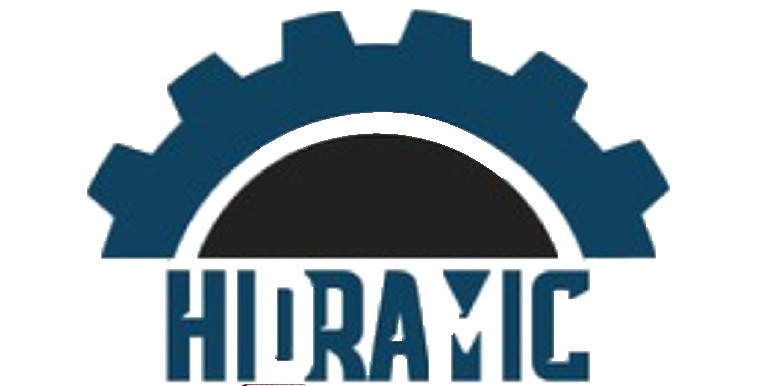

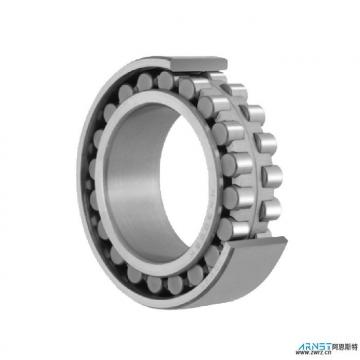 CRBH12025AUU Crossed Roller Bearing
CRBH12025AUU Crossed Roller Bearing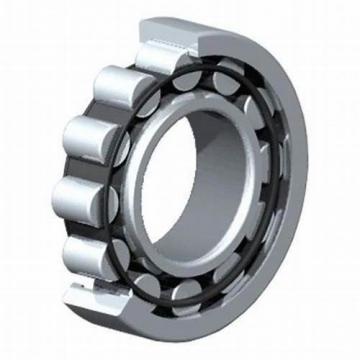 CRBH14025AUU Crossed Roller Bearing
CRBH14025AUU Crossed Roller Bearing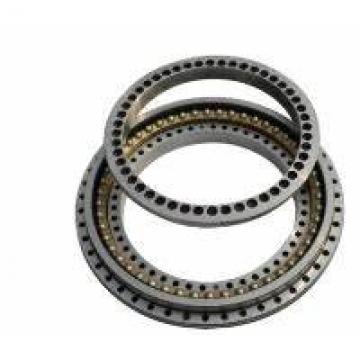 CRBH8016A Crossed roller bearing
CRBH8016A Crossed roller bearing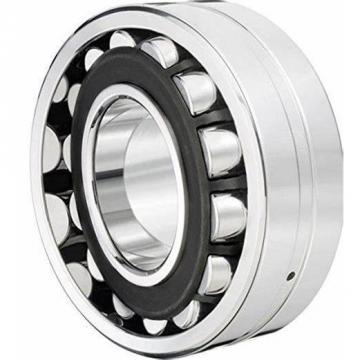 CRBH9016A Crossed roller bearing
CRBH9016A Crossed roller bearing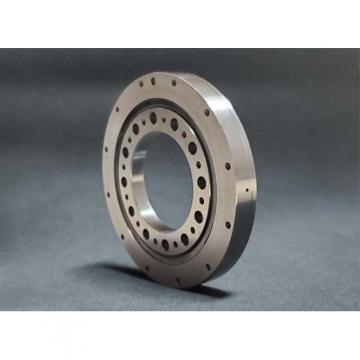 CRBH13025AUU Crossed Roller Bearing
CRBH13025AUU Crossed Roller Bearing